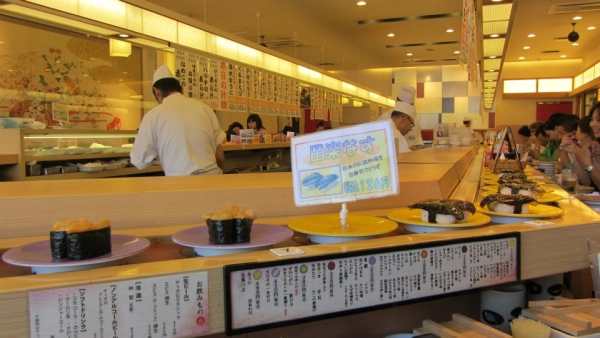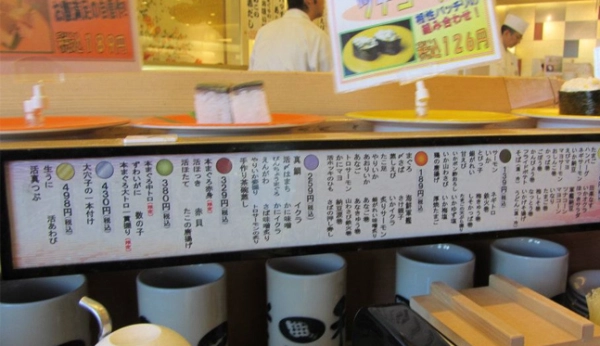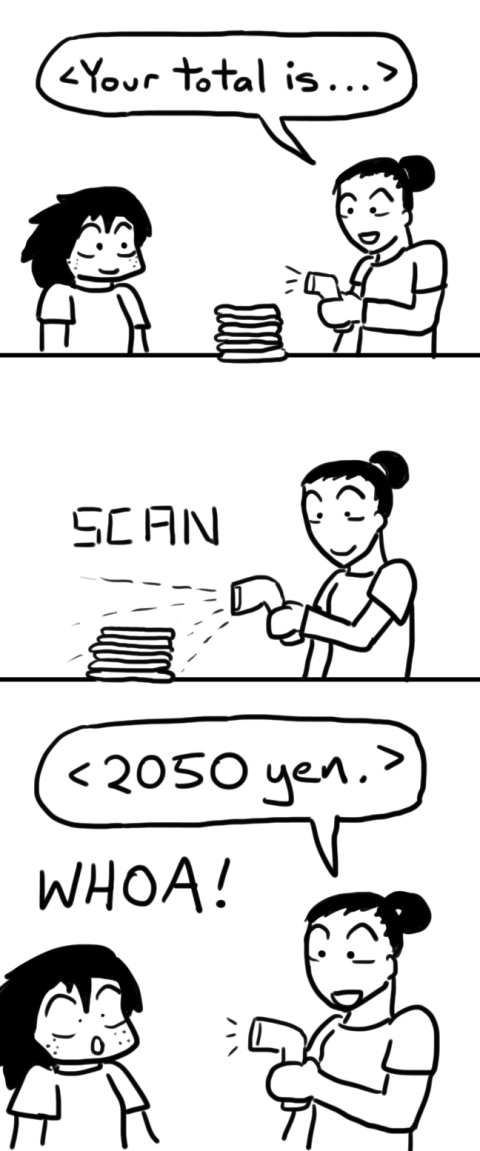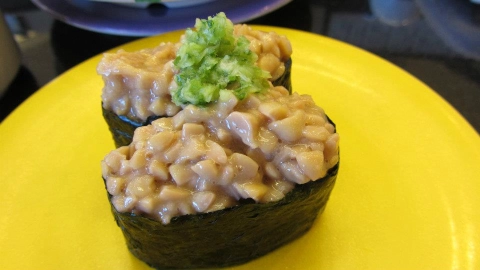One of the cooler things I got to experience in Japan was 回転寿司 (kaiten-zushi, also known as conveyor belt sushi). There is conveyor belt sushi in America (and, recently, Boston!) but I never had the chance to try it before.
Conveyor belt sushi is exactly what it sounds like: sushi on, well, a conveyor belt. Basically, the restaurant has a giant circular conveyor belt that is constantly moving. On the inside of the circle, sushi chefs are constantly making new maki and sashimi and placing their completed plates on the belt. Patrons sit on the outside, watching the plates go by and nabbing the ones that they want. It’s a strange combo between a fast-food and a sit-down restaurant.
You can get whatever and however many plates you’d like (each plate only had two pieces of sushi) but in the end, you will have to pay for them. At our restaurant, the plates were color-coded according to price like so:
So I had to be careful not to eat too much. And given the number of strange and enticing sushi rolling by, this was hard to do.
If you’re not careful, the cost can add up quickly! My group, comprised of only poor college kids, was cautious. We were pretty amazed by our fellow Japanese diners, though.
At the end of your meal, you call over one of the servers to tally up your plates. I’m not sure how this worked, but our servers has some awesome scanning device that did this automatically!
I admit that I’m not the bravest sushi eater. I’ll eat my raw salmon, my raw tuna, my eel and shrimp. But I’ve never found sea urchin or roe or squid to be particularly tasty. This time, however, I was feeling adventurous. I decided to grab this plate:
In case you’re unfamiliar with it, that’s natto– a popular and traditional Japanese food. It’s really just fermented soybeans. Looks harmless, right?
Now look at this picture of natto.
And this one.

And– uh, I don’t know what Google Images is trying to tell me, but you can look at this one too.

Explanation: There is none.
So now you somewhat have a sense of the texture of natto: half slimy, half sticky, viscous enough to form strings when it is mixed. I can’t really demonstrate natto’s flavor, but I can give you a description from Wikipedia: “nutty, savory, and slightly salty,” with a smell “somewhat akin to a pungent cheese.”
Japanese natives enjoy asking foreigners if they’re able to eat natto or not, since it has a very strong scent and flavor. It’s like a test. A test of… Japanese-ness. Natto is an acquired taste, they say, obtained only by the Japanese natives who grew up with it. Well, I was determined to take this test. As an exchange student, I had to try ALL the foods!
That’s one taste I was never meant to acquire.






